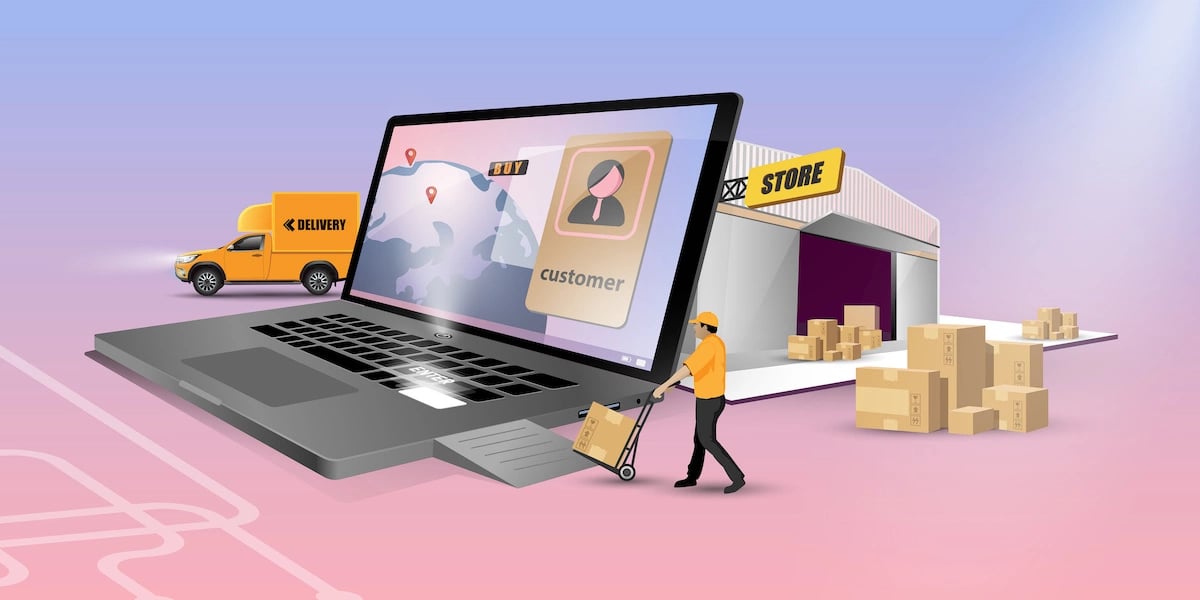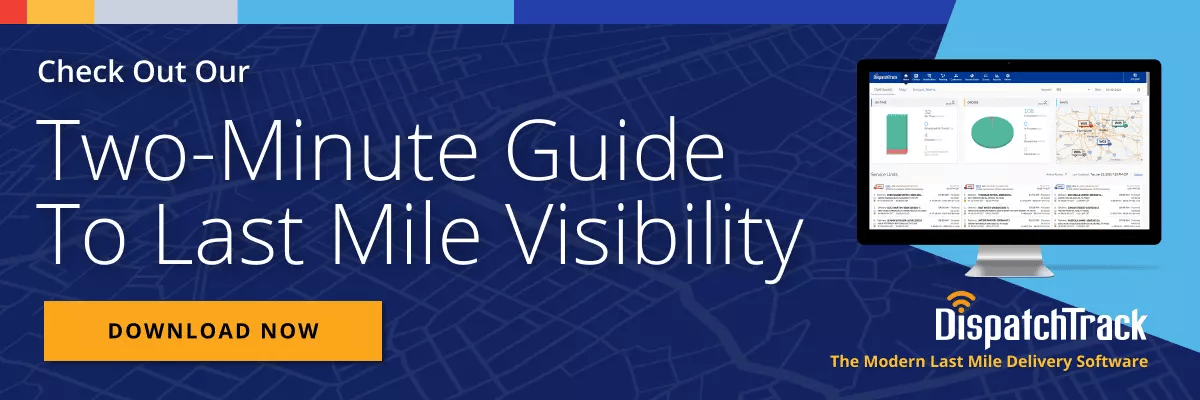Telematics software, which refers to the merging of information processing and telecommunications, actually became popular in the US in the 1970s—but it’s gaining more traction these days with the increasing reliability of telecommunications networks and the internet. Delivery organizations of different stripes are using telematics to transmit real-time information aimed at enabling the more effective management of fleets.

In fleet management, telematics software is typically used for onboard communication applications and services that communicate with each other through telematics devices and GPS receivers. The most common application here is for vehicle tracking, which telematics systems enable by using both onboard devices and a GPS system to show the vehicles’ speed and exact location.
Fleet telematics has gained more popularity in recent years partly as a result of stricter regulatory requirements and increasing business demands. Many fleet managers depend on telematics data to achieve operational efficiency and compliance with the electronic logging device (ELD) mandate. But how does telematics fit into larger delivery and distribution operations and the technology stack behind them?
What Is Telematics Software?
Generally speaking, a truck's exact location is provided by a telematics device. The information from the truck is then transferred through a wireless network all the way to the servers that run the applications your back-office teams rely on. This might include real-time tracking throughout the delivery itself, plus reporting for after the fact to simplify compliance and help you track performance over time.
Below are some of the benefits of telematics software:
Real-time visibility
This kind of vehicle-tracking provides businesses with visibility into the location and movements of drivers. Real-time visibility is one of the most basic functions of telematics solutions. This gives dispatchers, managers, and even customer support staff a real-time window into how each delivery is unfolding.
Fleet safety
Given that telematics solutions track and gather data on vehicles, they can also be used to gain a deeper understanding of drivers' behavior on the road. Using data from telematics, fleet managers can identify drivers who might be engaging in unsafe driving habits like rapid acceleration or harsh braking, and provide them with the necessary coaching to allay the unsafe practices—this can help increase the fleet's road safety.
Vehicle maintenance cost management
Most advanced telematics solutions are connected directly to the truck's diagnostic port so they can quickly and automatically gather engine data such as cooling temperature, fuel consumption, or engine load. This way, fleet managers and technicians can easily access vehicle maintenance-related information and establish an efficient vehicle maintenance schedule.
In this way, fleet managers pinpoint vehicle faults to proactively address vehicle problems.
Easier compliance
The right telematics tracker also makes it easier for fleets to ensure compliance with ELD rules, since telematics systems can automatically and electronically monitor vehicle drive time. Fleet managers can rely on the solution to keep tabs on on-duty status records. Some advanced telematics systems also allow fleets to streamline workflows related to compliance by certifying, editing, and annotating Hours of Service (HOS) logs.
Cost savings
The real-time visibility offered by telematics helps fleet managers track driver behavior and compliance with route plans. This visibility provides driver performance-related insights that can help in increasing fuel efficiency.
Without this level of visibility and data, fleet managers could be left clueless as to exactly what’s happening throughout the delivery process, making it hard to get a handle on delivery performance or uncover the sorts of insights that are necessary for optimizing costs.

How Telematics Software Does and Doesn’t Make the Last Mile More Efficient
Not all delivery organizations have a strong need for this kind of tracking. Those that don’t typically send drivers out on multi-day routes, for instance, may be able to get enough visibility from other sources. For businesses that have a strong use case for telematics software, however, it can be a game-changer—as long as it’s paired with the right last mile routing and management technology.
No solution exists in a vacuum. If you’re using telematics to track something that you haven’t first optimized to ensure efficient routes with accurate ETAs, then you’re still going to spend every delivery run putting out fires. By the same token, if you can see truck locations but not delivery statuses, you may not be getting the full picture of each delivery.
That’s why it’s so crucial to make sure your telematics solution is a connected, integrated part of your full delivery and logistics software stack. The best case scenario is to have strong data integration between telematics and last mile delivery management, with live data flows between the two systems. When you make that happen, you can be sure that you’re getting the most out of both systems.
Here are some other features and capabilities to look out for in your telematics software to help ensure great deliveries from end to end.
Cloud-based technology
Telematics software collects tons of data, which many physical servers, computers, or in-house IT teams can't handle. A cloud-based solution offers an easy workaround for that problem. This kind of deployment also does not require heavy maintenance work from the in-house IT department since the providers will be the ones to handle patches, upgrades, version control, and malware prevention.
Cloud-based telematics systems are also more easily scalable as businesses can choose to upgrade or downgrade features as needed. Perhaps most importantly, cloud technology makes data integration between different solutions much easier, helping multiply the impact of each solution.
Full real-time visibility
As mentioned, GPS tracking is one of the most common features of telematics software. This feature offers many benefits to the fleet manager, dispatcher, and driver. It allows dispatchers to send the right driver at the right time according to the location of each truck of the fleet. When you can integrate this with real-time delivery status updates, you can get even more value out of it.
Comprehensive data reporting
A must-have solution offers fleet managers comprehensive data on driver performance including location, speed, and harsh braking, and more. An advanced solution offers detailed and organized ways of presenting actionable driver reports. Ideally, you’d also be able to automatically report on things like fuel taxes and hours of service and easily export those reports as needed.
Fleet operations are complex. Without telematics software, fleet managers are at risk of being blind to the crucial aspects of fleet operations. The right solution can offer real-time visibility and communication, seamless compliance, improved fleet safety, and cost savings—the trick is just to make sure this technology is integrated effectively into your larger last mile delivery process and technology.